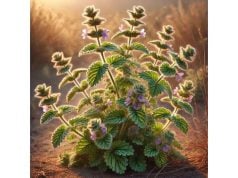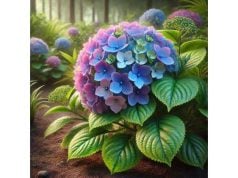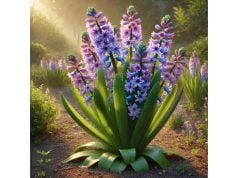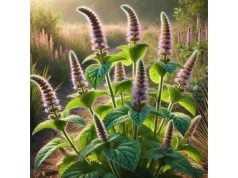
Himalayan Mayapple is a rare and revered herb native to the high-altitude regions of the Himalayas. Celebrated for its potent medicinal properties, this herb has been a cornerstone in traditional healing practices for centuries. Its unique bioactive compounds, particularly podophyllotoxin and related lignans, contribute to its anticancer, anti-inflammatory, and antiviral benefits. Himalayan Mayapple is used in diverse therapeutic applications ranging from topical treatments for skin disorders to systemic remedies for internal ailments. Discover the botanical nuances, chemical intricacies, health advantages, practical applications, and cutting-edge research that make Himalayan Mayapple an invaluable natural resource.
Table of Contents
- Plant Anatomy and Natural Habitat
- Phytochemical Profile and Bioactive Components
- Therapeutic Advantages and Core Attributes
- Utilization Strategies and Safety Guidelines
- Research Discoveries and Landmark Studies
- Frequently Asked Questions
Plant Anatomy and Natural Habitat
Himalayan Mayapple, scientifically known as Podophyllum hexandrum, is a perennial herb that thrives in the cool, moist understories of the Himalayan coniferous forests. This herb features a unique, umbrella-like growth habit with broad, palmate leaves and a single, nodding flower that gives way to a small, greenish fruit. The leaves, often glossy and deeply lobed, create an intricate pattern that aids in maximizing light capture in shaded conditions. The plant’s underground rhizomes store vital nutrients, ensuring survival during the harsh winter months and promoting rapid regrowth in spring.
Native to the rugged terrains of the Himalayas, Himalayan Mayapple flourishes at elevations ranging from 2,500 to 4,000 meters. Its preferred habitat is characterized by well-drained, humus-rich soils under a canopy of mixed deciduous and evergreen trees. The cool, misty environment, coupled with ample rainfall, creates ideal conditions for its growth. In these isolated regions, the plant is often found in clusters along forest trails, where traditional healers have long recognized its therapeutic potential.
The morphological features of Himalayan Mayapple are distinctive. The plant produces a solitary flower in early spring, whose delicate, bell-shaped structure transitions into a fruit that, while not widely consumed due to its toxic nature in raw form, plays a crucial role in the plant’s reproductive cycle. The flower’s subtle aroma attracts a variety of pollinators, including native bees and butterflies, which facilitate cross-pollination. The fruit, typically green before ripening to a yellowish hue, contains seeds that are dispersed by natural elements such as wind and water, ensuring the propagation of the species.
Himalayan Mayapple’s taxonomy places it within the Berberidaceae family, a group noted for its medicinally significant members. Its evolutionary adaptations, including the development of potent secondary metabolites, not only serve to deter herbivores but also contribute to its renowned pharmacological properties. Researchers have noted that the plant’s lignans, especially podophyllotoxin, are synthesized as a natural defense mechanism against microbial infections and environmental stressors.
The ecological role of Himalayan Mayapple extends beyond its medicinal applications. By thriving in the understory, it contributes to the biodiversity of forest ecosystems, offering shelter and sustenance to various invertebrates and small vertebrates. Its presence also aids in soil stabilization and nutrient cycling, thereby supporting the overall health of its native habitat. Conservationists are increasingly focused on sustainable harvesting practices, given that overexploitation could threaten this precious species in its natural environment.
Traditional communities in the Himalayan region have harnessed the benefits of this herb for generations. Detailed ethnobotanical surveys reveal that local healers have long used Himalayan Mayapple extracts to treat ailments ranging from warts and skin lesions to more severe conditions like cancer. This deep-rooted knowledge, passed down orally over centuries, has spurred modern scientific inquiry into the herb’s bioactive constituents, making it a subject of global research interest.
Recent efforts in botanical research have combined traditional wisdom with modern methodologies to develop improved cultivation practices. Initiatives aimed at tissue culture and in vitro propagation are under way to ensure that Himalayan Mayapple can be sustainably produced without depleting wild populations. These scientific endeavors not only enhance our understanding of the plant’s biology but also pave the way for its responsible commercial use in the pharmaceutical and cosmetic industries.
In summary, the unique anatomy and specialized habitat of Himalayan Mayapple underscore its significance as a botanical treasure. Its striking morphology, coupled with an intricate interplay of environmental factors, supports both its survival and its medicinal potency. As research continues and sustainable practices are implemented, the future of Himalayan Mayapple as a natural remedy and a subject of ecological study remains promising.
Phytochemical Profile and Bioactive Components
Himalayan Mayapple is renowned for its rich phytochemical composition, which underpins its therapeutic efficacy. The herb’s diverse array of bioactive constituents has attracted significant scientific attention, particularly due to their potential in combating cancer and inflammatory conditions. The following numbered analysis highlights the key compounds identified in Himalayan Mayapple and explores their unique properties:
- Podophyllotoxin
Podophyllotoxin is the most celebrated bioactive component of Himalayan Mayapple. This lignan exhibits potent cytotoxic activity and has been the basis for developing several anticancer agents. It works by disrupting microtubule assembly during cell division, thereby inducing apoptosis in rapidly proliferating cancer cells. Ongoing research seeks to optimize its derivatives for improved efficacy and reduced toxicity. - Deoxypodophyllotoxin
Closely related to podophyllotoxin, deoxypodophyllotoxin also contributes to the herb’s anticancer profile. It has demonstrated promising results in inhibiting tumor growth by modulating key signaling pathways in malignant cells. This compound has shown synergistic effects when combined with other chemotherapeutic agents, making it a focal point in the search for novel cancer treatments. - β-Peltatin
β-Peltatin is another lignan present in Himalayan Mayapple that exerts anti-inflammatory and antiviral effects. Its ability to interfere with viral replication pathways has been explored in the context of treating viral infections. Additionally, β-peltatin’s anti-inflammatory properties support its role in reducing tissue inflammation and promoting healing. - α-Peltatin
Similar to its beta isomer, α-peltatin contributes to the herb’s therapeutic versatility. Research indicates that α-peltatin may enhance immune responses by modulating cytokine production. Its dual action as an anti-inflammatory and immune-boosting agent positions it as a valuable component in managing chronic inflammatory diseases. - Flavonoids (Quercetin and Kaempferol)
Himalayan Mayapple is also a source of flavonoids such as quercetin and kaempferol. These compounds are renowned for their antioxidant capabilities, which help in neutralizing free radicals and mitigating oxidative stress. Their presence not only bolsters the herb’s overall anti-inflammatory profile but also supports cardiovascular and immune health. - Phenolic Acids
Phenolic acids, including ferulic acid and caffeic acid, are present in trace amounts in Himalayan Mayapple. These acids contribute to the herb’s antimicrobial and anti-inflammatory actions. Their antioxidant properties further enhance cellular protection, reducing the risk of chronic diseases associated with oxidative damage. - Terpenoids
The volatile terpenoids found in Himalayan Mayapple contribute to its distinctive aroma and may play a role in its mild analgesic and antimicrobial properties. These compounds are believed to enhance the bioavailability of other active constituents by facilitating their absorption across biological membranes. - Saponins
Saponins are natural glycosides present in the herb that serve as emulsifiers and possess expectorant properties. Their role in traditional medicine includes supporting respiratory health and aiding in the effective delivery of the herb’s bioactive compounds when consumed as an infusion or tincture.
Each of these compounds not only plays a critical role in the plant’s natural defense mechanisms but also underpins the wide-ranging therapeutic benefits attributed to Himalayan Mayapple. Advanced extraction techniques, such as high-performance liquid chromatography (HPLC) and supercritical fluid extraction, have been employed to isolate and quantify these constituents. This has allowed researchers to better understand the synergistic interactions that enhance the herb’s overall potency.
Modern pharmacological studies continue to investigate how these bioactive components interact with human cellular pathways. For instance, podophyllotoxin and its derivatives are at the forefront of research in anticancer drug development, given their ability to selectively target rapidly dividing cells. Similarly, the flavonoids and phenolic acids in Himalayan Mayapple have been shown to activate antioxidant enzymes, providing a cellular defense mechanism against oxidative stress.
The complex phytochemical profile of Himalayan Mayapple illustrates the intricate balance of nature’s design. It is this diversity of active ingredients that makes the herb a subject of global research interest. As scientists continue to decode its chemical composition, there is a growing potential for the development of new therapeutic agents that harness the full spectrum of its medicinal properties.
Furthermore, the natural synthesis of the���������������������������������������������������������������������������������������������������������������������������������������������������������������������������������������������������������������������������������������������������������������������������������������������������������������������������������������������������������������������������������������������������������������������������������������������������������������������������������������������������������������������������������������������������������������������������������������������������������������������������������������������������������������������������������������������������������������������������������������������������������������������������������������������������������������������������������������������������������������������������������������������������������������������������������������������������������������������������������������������������������������������������������������������������������������������������������������������������������������������������������������������������������������������������������������������������������������������������������������������������������������������������������������������������������������������������������������������������������������������������������������������������������������������������������������������������������������������������������������������������������������������������������������������������������������������������������������������������������������������������������������������������������������������������������������������������������������������������������������������������������������������������������������������������������������������������������������������������������������������������������������������������������������������������������������������������������������������������������������������������������������������������������������������������������������������������������������������������������������������������������������������������������������������������������������������������������������������������������������������������������������������������������������������������������������������������������������������������������������������������������������������������������������������������������������������������������������������������������������������������������������������������������������������������������������������������������������������������������������������������������������������������������������������������������������������������������������������������������������������������������������������������������������������������������������������������������������������������������������������������������������������������������������������������������������������������������������������������������������������������������������������������������������������������������������������������������������������������������������������������������������������������������������������������������������������������������������������������������������������������������������������������������������������������������������������������������������������������������������������������������������������������������������������������������������������������������������������������������������������������������������������������������������������������������������������������������������������������������������������������������������������������������������������������������������������������������������������������������������������������������������������������������������������������������������������������������������������������������������������������������������������������������������������������������������������������������������������������������������������������������������������������������������������������������������������������������������������������������������������������������������������������������������������������������������������������������������������������������������������������������������������������������������������������������������������������������������������������������������������������������������������������������������������������������������������������������������������������������������������������������������������������������������������������������������������������������������������������������������������������������������������������������������������������������������������������������������������������������������������������������������������������������������������������������������������������������������������������������������������������������������������������������������������������������������������������������������������������������������������������������������������������������������������������������������������������������������������������������������������������������������������������������������������������������������������������������������������������������������������������������������������������������������������������������������������������������������������������������������������������������������������������������������������������������������������������������������������������������������������������������������������������������������������������������������������������������������������������������������������������������������������������������������������������������������������������������������������������������������������������������������������������������������������������������������������������������������������������������������������������������������������������������������������������������������������������������������������������������������������������������������������������������������������������������������������������������������������������������������������������������������������������������������������������������������������������������������������������������������������������������������������������������������������������������������������������������������������������������������������������������������������������������������������������������������������������������������������������������������������������������������������������������������������������������������������������������������������������������������������������������������������������������������������������������������������������������������������������������������������������������������������������������������������������������������������������������������������������������������������������������������������������������������������������������������������������������������������������������������������������������������������������������������������������������������������������������������������������������������������������������������������������������������������������������������������������������������������������������������������������������������������������������������������������������������������������������������������������������������������������������������������������������������������������������������������������������������������������������������������������������������������������������������������������������������������������������������������������������������������������������������������������������������������������������������������������������������������������������������������������������������������������������������������������������������������������������������������������������������������������������������������������������������������������������������������������������������������������������������������������������������������������������������������������������������������������������������������������������������������������������������������������������������������������������������������������������������������������������������������������������������������������������������������������������������������������������������������������������������������������������������������������������������������������������������������������������������������������������������������������������������������������������������������������������������������������������������������������������������������������������������������������������������������������������������������������������������������������������������������������������������������������������������������������������������������������������������������������������������������������������������������������������������������������������������������������������������������������������������������������������������������������������������������������������������������������������������������������������������������������������������������������������������������������������������������������������������������������������������������������������������������������������������������������������������������������������������������������������������������������������������������������������������������������������������������������������������������������������������������������������������������������������������������������������������������������������������������������������������������������������������������������������������������������������������������������������������������������������������������������������������������������������������������������������������������������������������������������������������������������������������������������������������������������������������������������������������������������������������������������������������������������������������������������������������������������������������������������������������������������������������������������������������������������������������������������������������������������������������������������������������������������������������������������������������������������������������������������������������������������������������������������������������������������������������������������������������������������������������������������������������������������������������������������������������������������������������������������������������������������������������������������������������������������������������������������������������������������������������������������������������������������������������������������������������������������������������������������������������������������������������������������������������������������������������������������������������������������������������������������������������������������������������������������������������������������������������������������������������������������������������������������������������������������������������������������������������������������������������������������������������������������������������������������������������������������������������������������������������������������������������������������������������������������������������������������������������������������������������������������������������������������������������������������������������������������������������������������������������������������������������������������������������������������������������������������������������������������������������������������������������������������������������������������������������������������������������������������������������������������������������������������������������������������������������������������������������������������������������������������������������������������������������������������������������������������������������������������������������������������������������������������������������������������������������������������������������������������������������������������������������������������������������������������������������������������������������������������������������������������������������������������������������������������������������������������������������������������������������������������������������������������������������������������������������������������������������������������������������������������������������������������������������������������������������������������������������������������������������������������������������������������������������������������������������������������������������������������������������������������������������������������������������������������������������������������������������������������������������������������������������������������������������������������������������������������������������������������������������������������������������������������������������������������������������������������������������������������������������������������������������������������������������������������������������������������������������������������������������������������������������������������������������������������������������������������������������������������������������������������������������������������������������������������������������������������������������������������������������������������������������������������������������������������������������������������������������������������������������������������������������������������������������������������������������������������������������������������������������������������������������������������������������������������������������������������������������������������������������������������������������������������������������������������������������������������������������������������������������������������������������������������������������������������������������������������������������������������������������������������������������������������������������������������������������������������������������������������������������������������������������������������������������������������������������������������������������������������������������������������������������������������������������������������������������������������������������������������������������������������������������������������������������������������������������������������������������������������������������������������������������������������������������������������������������������������������������������������������������������������������������������������������������������������������������������������������������������������������������������������������������������������������������������������������������������������������������������������������������������������������������������������������������������������������������������������������������������������������������������������������������������������������������������������������������������������������������������������������������������������������������������������������������������������������������������������������������������������������������������������������������������������������������������������������������������������������������������������������������������������������������������������������������������������������������������������������������������������������������������������������������������������������������������������������������������������������������������������������������������������������������������������������������������������������������������������������������������������������������������������������������������������������������������������������������������������������������������������������������������������������������������������������������������������������������������������������������������������������������������������������������������������������������������������������������������������������������������������������������������������������������������������������������������������������������������������������������������������������������������������������������������������������������������������������������������������������������������������������������������������������������������������������������������������������������������������������������������������������������������������������������������������������������������������������������������������������������������������������������������������������������������������������������������������������������������������������������������������������������������������������������������������������������������������������������� toxicity.
An investigation reported in Cancer Chemotherapy and Pharmacology evaluated the synergistic potential of Himalayan Mayapple extracts when combined with conventional chemotherapeutic drugs. The findings suggested that such combinations could enhance antitumor efficacy while reducing the dosage requirements of standard drugs, thereby potentially lowering side effects.
A molecular biology study published in Plant Physiology provided insights into the biosynthetic pathways that lead to lignan production in Himalayan Mayapple. Understanding these pathways offers promising avenues for bioengineering and sustainable cultivation practices to optimize the yield of therapeutic compounds.
These studies collectively affirm the multifaceted therapeutic potential of Himalayan Mayapple. The convergence of traditional knowledge and modern scientific inquiry has not only elucidated the mechanisms behind its health benefits but has also paved the way for new drug development and integrative treatment approaches. As research continues to expand, further clinical trials and mechanistic studies are expected to deepen our understanding of this extraordinary herb, ultimately facilitating its safe and effective incorporation into modern medical practice.
Frequently Asked Questions
What is Himalayan Mayapple and where is it found?
Himalayan Mayapple, scientifically known as Podophyllum hexandrum, is a perennial herb native to the moist, shaded understories of the Himalayan forests. It thrives at high altitudes and is renowned for its potent medicinal properties and unique bioactive compounds.
How is Himalayan Mayapple used in traditional medicine?
Traditionally, Himalayan Mayapple is used in various forms including decoctions, tinctures, and topical applications. Its extracts are valued for anticancer, anti-inflammatory, and antiviral properties, and are used to treat skin lesions, warts, and digestive disorders.
What are the primary active compounds in Himalayan Mayapple?
The herb’s therapeutic effects are largely attributed to its lignans, particularly podophyllotoxin, along with related compounds such as deoxypodophyllotoxin and peltatins. These compounds are known for their anticancer, anti-inflammatory, and immunomodulatory activities.
Are there any side effects or precautions associated with its use?
Due to its potent bioactive compounds, Himalayan Mayapple should be used under professional supervision. Overdosage may lead to gastrointestinal upset, skin irritation, or systemic toxicity. Pregnant and breastfeeding women should avoid its use, and a patch test is recommended for topical applications.
Where can I find reliable Himalayan Mayapple products?
High-quality Himalayan Mayapple products are available from reputable herbal suppliers and specialized health stores. It is important to choose standardized extracts with proper quality certifications to ensure safety and efficacy.
Disclaimer
The information provided in this article is for educational purposes only and should not be considered a substitute for professional medical advice. Always consult a qualified healthcare provider before making any changes to your health regimen.
Please share this article on Facebook, X (formerly Twitter), or your favorite social media platform, and follow us on our social networks for the latest updates in natural wellness and herbal research.










